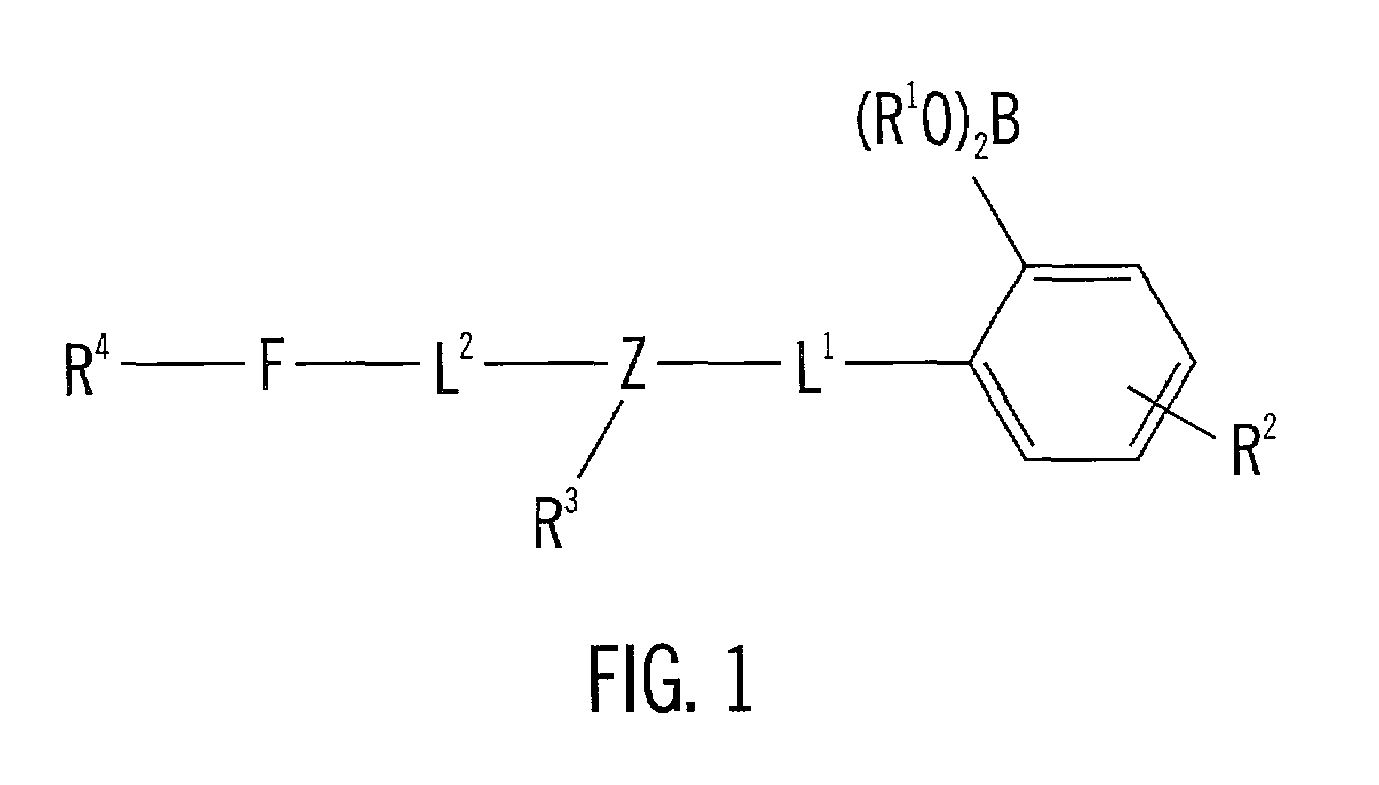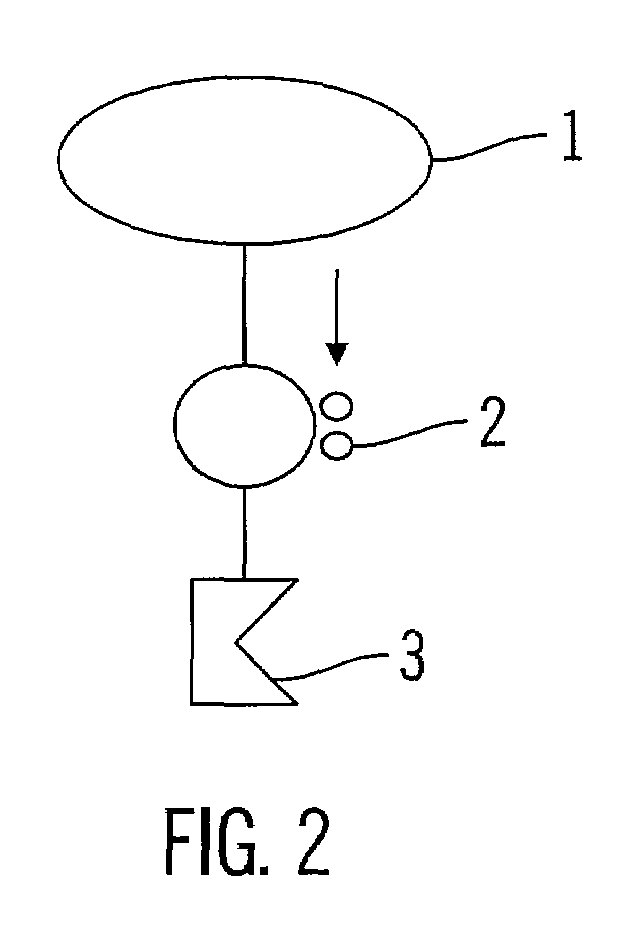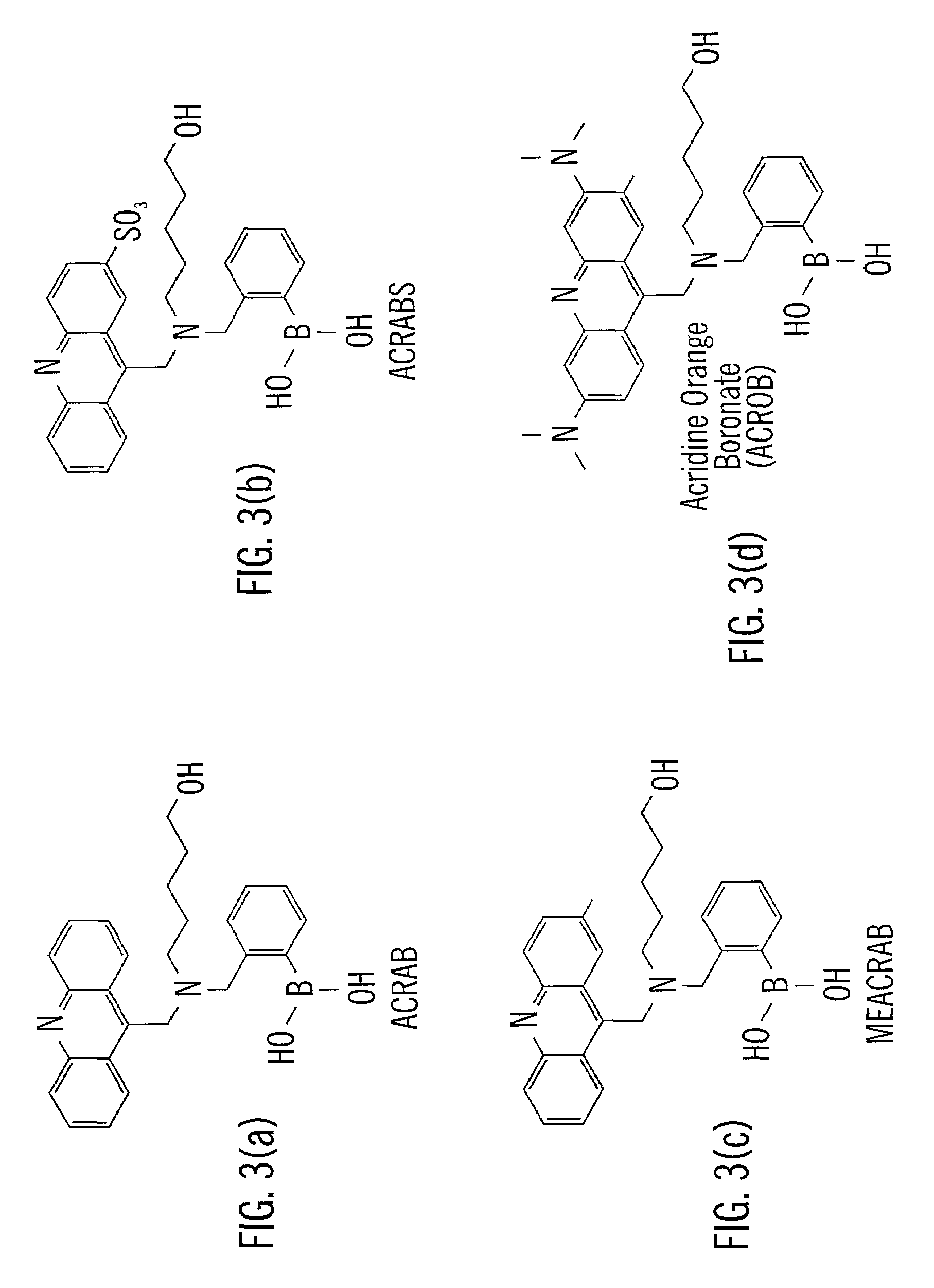Analyte sensing via acridine-based boronate biosensors
a biosensor and analyte technology, applied in the field of optical biosensor systems, can solve the problems of inability to detect glucose levels in patients' blood, inability to accurately measure glucose levels, and difficulty in detecting glucose levels, etc., to achieve the effect of increasing the sensitivity of the sensing ability of these biosensor molecules
- Summary
- Abstract
- Description
- Claims
- Application Information
AI Technical Summary
Benefits of technology
Problems solved by technology
Method used
Image
Examples
examples
[0068]1. Synthetic Methods of Making Embodiments of the Acridine-Based Boronate Biosensor Molecules of the Invention
[0069]The following methods outlined the synthetic steps of making particular embodiments of the acridine-based boronate biosensor molecules of the invention. These particular embodiments are ACRAB (aminomethylhydroxypentyl-acridine boronate) and MEACRAB (aminomethylhydroxypentyl-methylacridine boronate), both of which are monotopic biosensor molecules, i.e., biosensor molecules including a singular polyhydroxylate recognition / binding site. The synthetic schemes for the production of ACRAB and MEACRAB are shown in FIG. 10 and FIG. 11, respectively.
i) Acridine-Based Boronate Biosensor Molecules
a) Intermediate Biosensor Products
[0070]Acridine-9-carboxaldehyde: 9-Methylacridine (500 mg., 2.59 mmol) was added to a 20 ml vial equipped with a stir bar. Dichloromethane (DCM)(15 ml) was added and the mixture was stirred vigorously until a clear yellow solution was obtained. Py...
PUM
| Property | Measurement | Unit |
|---|---|---|
| maximum wavelength | aaaaa | aaaaa |
| emission wavelength | aaaaa | aaaaa |
| maximum wavelength | aaaaa | aaaaa |
Abstract
Description
Claims
Application Information
 Login to View More
Login to View More - R&D
- Intellectual Property
- Life Sciences
- Materials
- Tech Scout
- Unparalleled Data Quality
- Higher Quality Content
- 60% Fewer Hallucinations
Browse by: Latest US Patents, China's latest patents, Technical Efficacy Thesaurus, Application Domain, Technology Topic, Popular Technical Reports.
© 2025 PatSnap. All rights reserved.Legal|Privacy policy|Modern Slavery Act Transparency Statement|Sitemap|About US| Contact US: help@patsnap.com



